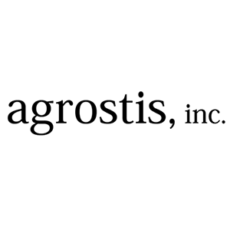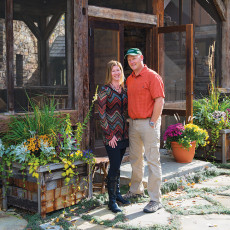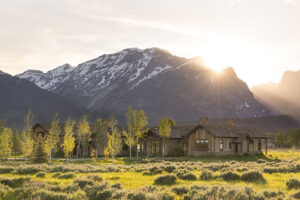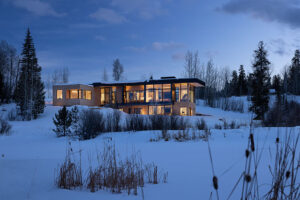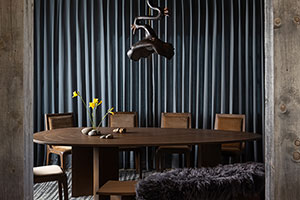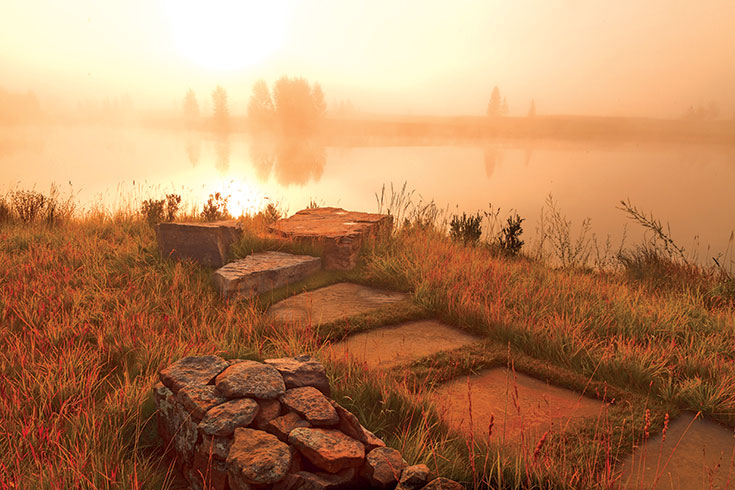
Story By
David Porter
Photos By
David Swift
Courtesy of Agrostis Inc. and
Boreal Property Management
Jackson Hole is rife with biodiversity. Few residential environments offer the pristine upland prairies, riparian areas and wetlands, subalpine forests, and abundant wildlife we all enjoy. Yet, herein lies a paradox: Building a home in Jackson inevitably impacts the natural environment we love.
Fortunately, locally based landscape architects, scientists, and landscape installers have the knowledge of place, experience, and skills necessary to blend the planned and natural environments.
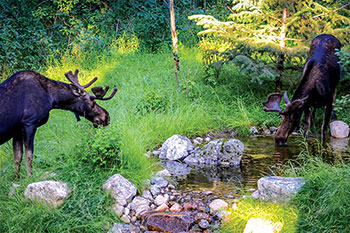
Jason Snider and Heath Kuszak founded Agrostis Inc., a landscape architecture firm, in 2008. Their knowledge of place is reflected in their company name, which defines a genus of various grasses found in this region.
“Balance is the key to the whole process” of designing and installing a landscape around new or remodeled construction, says Snider. He believes it is essential to balance aesthetics of design with science to achieve a planned landscape that acts in concert with its undisturbed surroundings.
Many of Agrostis’ clients live in proximity to Grand Teton National Park or U.S. Forest Service boundaries, directly in the wildland- urban overlay. “There is a need to be authentic in these spaces,” Kuszak says. “The landscapes need to be carefully considered so that the design achieves the clients’ desires, yet functions within the native plant and wildlife communities.”
Like the work at Agrostis, science influences projects at Boreal Property Management as well. The company was established by Boreal President Mike Wheeler in 2005. Wheeler has an extensive background in ecology and landscaping best practices.
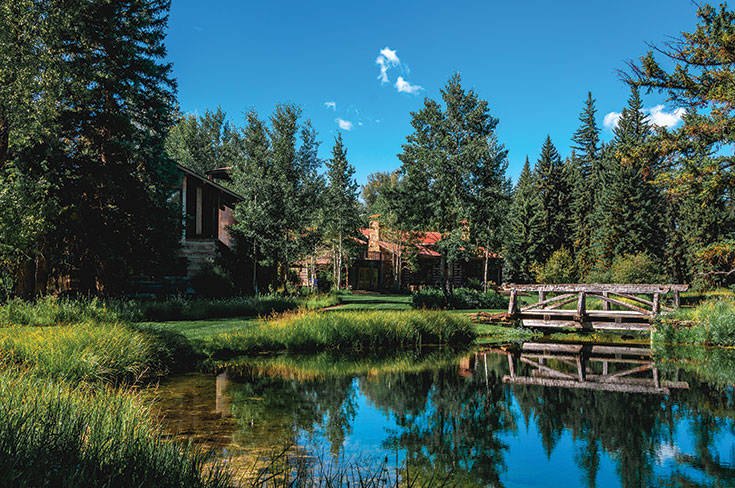
Drew Weesen, project manager at Boreal, describes their approach to working within Jackson’s ethos of environmental conservation: “Ultimately we want to please our clients. But we’re always going to recommend the most ecologically responsible solution,” from design through installation. Boreal landscapers plant native grasses, wildflowers—such as yarrow, flax, and columbine—native trees like aspen and fir, and shrubs, yet limit the use of exotic, ornamental plants to containers only. Native flora is adapted to our soil and thrives in our climate, which reduces plant mortality.
It is not only vegetation and migrating wildlife that concern landscape architects and those who install their designs. Water and water features are of immense importance in Jackson, too. There is urgency in preserving clean water because it is essential to all walks of life in Jackson Hole, from the smallest insects to the largest ungulates.
With a design and scientific data prepared, landscape teams like those at Boreal can install or rehabilitate moving and still water features. Both types of features present a challenge. Weesen describes building a pond where one might not have naturally occurred. “The pond must be visually appealing and provide clean water.” To accomplish this, Boreal first excavates to create a depression. The depression is then lined with seam-sealed, synthetic, waterproof material. Rock, soil, and aquatic plants are added on top of the liner, and the edges are finished with native grasses and shrubs, such as willows. Water is circulated by subsurface pumps, which infuse the water with oxygen. This achieves the double-edged goal of retaining a natural appearance while ensuring clean water—the result is a healthy pond that looks like it has existed over centuries.
Agrostis’ landscape architects contract with Brian Remlinger and his company, Alder Environmental, when they need to learn more about the water they work with.
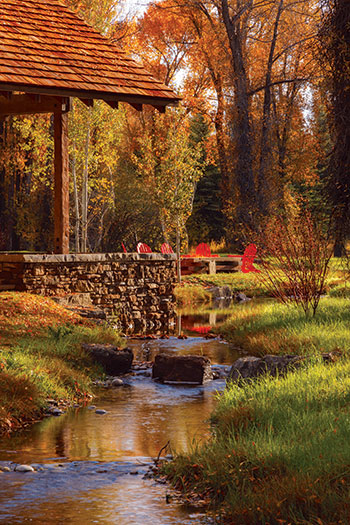
“The biology of the water subsurface is really complex,” Snider says. “When
we know more about that biology, we then know how to keep the water clean. We know what density of plant life to introduce, either on the shore or under the surface. Ultimately it promotes healthy insect life and it’s better for fish.”
Kuszak adds, “Algae is inevitable in water here so we respond by including pockets of emergent wetland vegetation along the edges of our water features. The pockets appear as naturally occurring, yet they’re strategically installed so that they collect algae around the fringes, keeping it from floating freely and virtually out of sight.” Thus, damaging and unsightly algae blooms are prevented.
Regardless of the landscape design and installation, everything must fall within local code. That is where Alder Environmental comes in. Remlinger and his team strive to seek the balance Snider emphasizes. Remlinger works with public agencies, contractors, and landscaping firms to scientifically and sensitively plan and implement water features on private and public property. He says that Alder operates in the space between the developer and the dictates of Teton County’s Comprehensive Development Plan. Remlinger says, “We provide a service and have a duty. We must accurately evaluate habitat, wildlife values, and aquatic resources on a property and ensure that the development complies with the comprehensive plan.”
“The landscapes need to be carefully considered so that the design achieves the clients’ desires, yet functions within the native plant and wildlife communities.”
– Heath Kuszak of Agrostis Inc.
In respect to the comprehensive plan, Alder has a responsibility “to identify protected wildlife and aquatic resources,” assist the developer in avoiding impacts, or to develop resource and habitat mitigation plans to compensate for those impacts.” Remlinger adds that Alder Environmental approaches all projects scientifically. “Data must be collected accurately and with credibly defensible methods.”
If one could build a new home and avoid disturbing its natural surroundings, there would be no need for teams of landscape architects, scientists, and landscape installers, but it is impossible to avoid interruptions altogether. Knowledge and operations shared among companies like Agrostis, Alder, and Boreal, however, make it seem like a home was gently set down on land never touched. More than preserving a view, these tactics preserve Jackson Hole’s species and environmental integrity.


 Design Inspiration
Design Inspiration